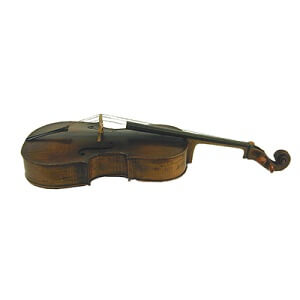Tenor Violin
 Carleen Maley Hutchins was a teacher, luthier, and scientist who is best known for her acoustical studies of the violin. Among her contributions, Hutchins developed a technique for tuning the top and backs of violins. Known as free-plate tuning, this process allows for the precise refinement of these critical acoustical elements before an instrument is assembled.
Carleen Maley Hutchins was a teacher, luthier, and scientist who is best known for her acoustical studies of the violin. Among her contributions, Hutchins developed a technique for tuning the top and backs of violins. Known as free-plate tuning, this process allows for the precise refinement of these critical acoustical elements before an instrument is assembled.
The tenor violin has a body that is about the size of a 1/2 size cello. The tenor violin, however, has thinner ribs. The instrument is tuned one octave below a traditional violin. The serial number of this instrument is SUS 146.
The impetus to create the new family of violins came from the composer Henry Brant, who approached Hutchins with a request to build a finely matched consort of violins. Based on her own acoustical experiments, Hutchins expanded the string section to eight instruments ranging in size from the double bass violin to a tiny treble violin, tuned one octave above the traditional instrument. Brant was so impressed with the new ensemble that he composed a special piece for the instruments that was premiered in New York as part of Max Pollikoff’s 1965 program "Music in Our Time." Subsequent composers have written music for individual, small groups, and the entire Hutchins ensemble.